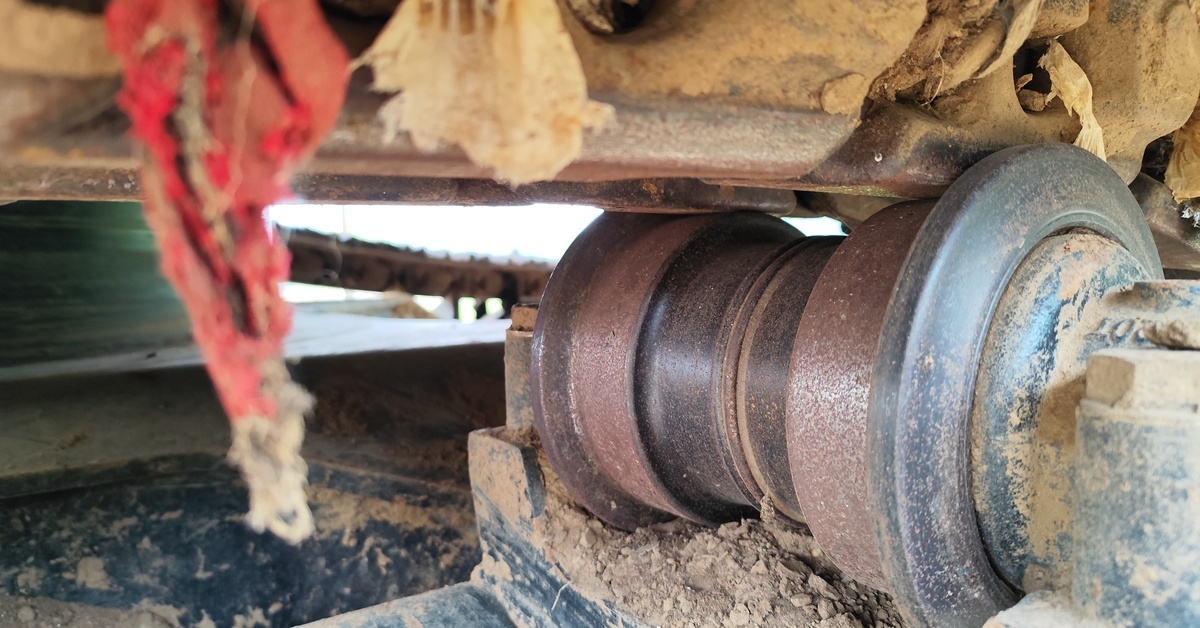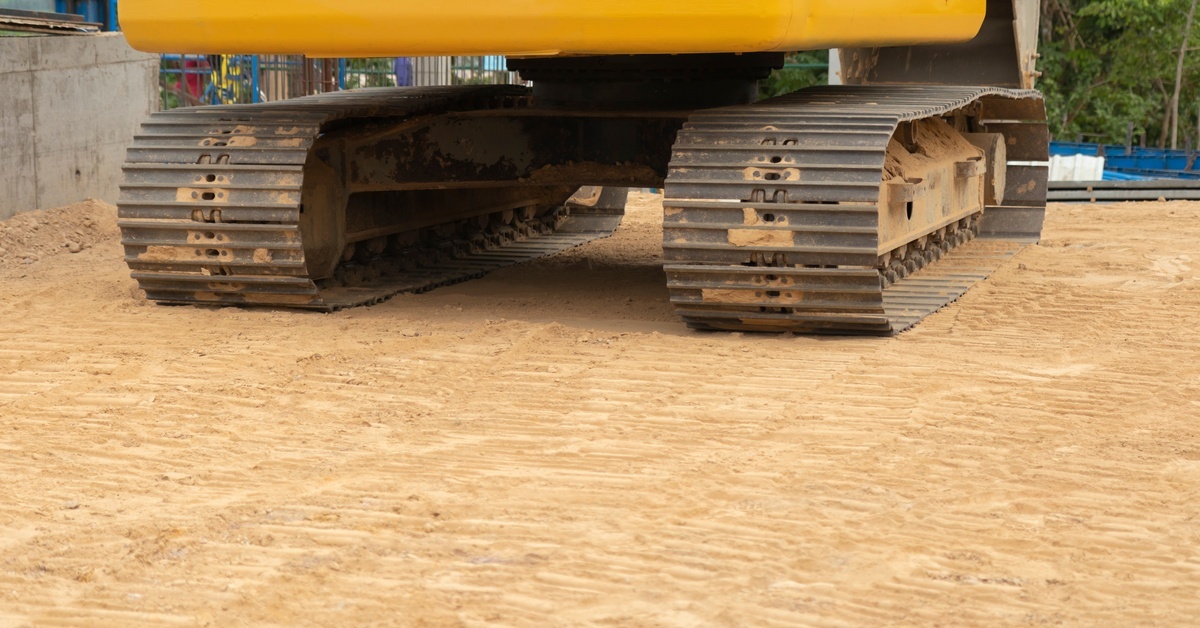The Importance of Proper Alignment in Undercarriage Parts
Jul 3rd 2025
For industries such as construction, the importance of alignment in undercarriage parts is a major factor in reducing operational costs and extending the lifespan of the equipment. The following information explains why alignment is necessary, the risks of neglecting it, and practical steps for maintaining undercarriage parts.
Undercarriages are the backbone of tracked machinery, bearing heavy loads and working through tough conditions daily. Alignment guarantees that all components, from the tracks to the rollers and idlers, work harmoniously under these demanding circumstances. It allows machinery to glide smoothly over all kinds of terrain, including loose soil, rocky paths, and muddy ground.
Even the smallest misalignment can disrupt the system. Misaligned tracks can lead to uneven weight distribution, overburdening specific areas of the undercarriage. These problems can result in accelerated wear of tracks, rollers, and idlers while straining the machine’s drive system. Over time, a misaligned undercarriage not only risks isolated damage but also creates a domino effect, wearing out interdependent components and potentially causing critical system failures.
When you prioritize alignment, the tracks stay centered, the pressure is evenly distributed, and the drive system operates without unnecessary stress. This balance extends the lifespan of undercarriage parts and improves the machine’s operational efficiency.
Neglecting the parts’ alignment can lead to a range of issues that ultimately harm both productivity and profitability. One of the most obvious consequences is uneven track wear.
The tracks distribute weight evenly, but misalignment forces certain areas to bear excessive stress. This uneven distribution from misalignment results in premature wear, increasing the frequency of track replacements and high maintenance costs.
Components like rollers, sprockets, and idlers also face additional strain due to misalignment. Rollers subjected to uneven weight distribution may lose their structural integrity, leading to reduced performance or breakage.
Similarly, misaligned sprockets can disrupt the movement of tracks, while off-center idlers may cause derailments or force tracks out of alignment entirely. Each of these issues triggers costly repairs and downtime, compounding operational inefficiencies.
Additionally, misalignment hurts machine operators. Constant vibration and jerky movements caused by misaligned components reduce visibility and handling precision. This makes tasks more challenging, elevates fatigue, and increases the likelihood of human error.

Alignment guarantees better performance and reduces operating expenses by decreasing the need for frequent repairs, replacements, or additional resources. Focusing on alignment as part of your maintenance plan secures savings across multiple areas.
One immediate benefit is lower fuel usage. Misaligned undercarriage parts increase resistance during operation, forcing the engine to work harder and consume more fuel. Regularly maintaining alignment ensures that parts work in harmony, lowering mechanical drag and improving fuel efficiency. When applied across an entire fleet, this can result in considerable savings over time.
Scheduled inspections are another critical cost-saving measure. Checking for uneven wear on sprockets, tracks, and rollers helps detect alignment issues early on, preventing damage from escalating. For instance, periodic checks of track tension ensure that tracks are neither too loose nor overly tight, both of which increase the likelihood of misalignment and subsequent wear.
Using high-quality replacement components offers similar long-term benefits. Cheap, subpar parts might fit incorrectly or fail prematurely, both of which can worsen alignment issues. Investing in precision-engineered components supports the equipment’s functionality.
Preventive maintenance plays a necessary role in avoiding alignment-related issues before they occur. Establishing a proactive maintenance schedule helps early detection of potential problems, allowing you to address minor misalignments before they develop into major setbacks.
Routinely inspect the equipment, focusing on wear patterns around the rollers, idlers, and tracks. Misalignment commonly starts subtly; then, it builds up into uneven wear.
Regular cleaning is another important strategy. Dirt, stones, and debris can accumulate within the undercarriage, disrupting the alignment of tracks and rollers. A cleaning schedule helps eliminate these obstructions, keeping operations running without problems and preventing long-term wear and tear. For the best results, consider using pressure washers or compressed air to thoroughly clean hard-to-reach areas.
Another vital component of preventive maintenance involves monitoring track tension. Tracks that are too tight risk stressing the undercarriage, while loose tracks increase the likelihood of derailment. Maintaining optimal tension, as recommended by the equipment manufacturer, creates a stable foundation for proper alignment.
Preserving alignment requires diligence, technical expertise, and access to quality components. At the core of any alignment strategy is consistency. Frequent visual inspections, coupled with data from diagnostic equipment, ensure that misalignment is corrected immediately.
Calibration is equally important. Every machine has unique specifications, which must be adhered to during alignment procedures. Negligence in this area can result in unbalanced components and uneven load distribution, defeating the purpose of routine maintenance.
Equally necessary is the quality of the parts you choose because misalignment often begins with incompatibly sized or poorly constructed components. Contact Tractor Zone for high-quality undercarriage parts for sale designed to meet your machinery’s specifications and guarantee proper functionality and flawless integration. Whether replacing tracks, rollers, or sprockets, investing in reliable components sets a solid foundation for long-lasting alignment.

Businesses that prioritize machine alignment partner with specialists who bring expertise and diagnostic efficiency to their alignment projects. Aligning complex machinery requires not just tools but also skills honed over years of experience. Specialists conduct meticulous assessments of wear patterns and track tension and alignment to provide actionable solutions tailored to your machinery.
Training in-house teams can help reduce long-term reliance on external support. Equipping operators with alignment knowledge gives them the power to proactively monitor and adjust components, lowering equipment downtime and sudden failures.
Access to high-quality replacement parts through trusted suppliers, such as Tractor Zone, simplifies maintenance processes. Utilizing a streamlined supplier that offers durable components improves fleet reliability with effective alignment.
Proper alignment is an investment that provides returns in the form of reliable machinery, fewer repairs, and extended product lifecycles. An aligned machine requires less fuel, fewer part replacements, and less frequent maintenance, directly contributing to lower operational costs. By prioritizing alignment, you position your business for success through cost savings, uptime reliability, and efficient workforce utilization.
All effective maintenance programs hinge on striking a balance between preventive work and operational demands, underscoring the importance of proper alignment in undercarriage parts. When you align your focus on machinery alignment, you extend the lifespan of undercarriage parts, improve cost efficiency, and create safer operations for your team. If you’re ready to address alignment gaps, Tractor Zone is here to supply high-quality undercarriage parts that ensure excellent performance.